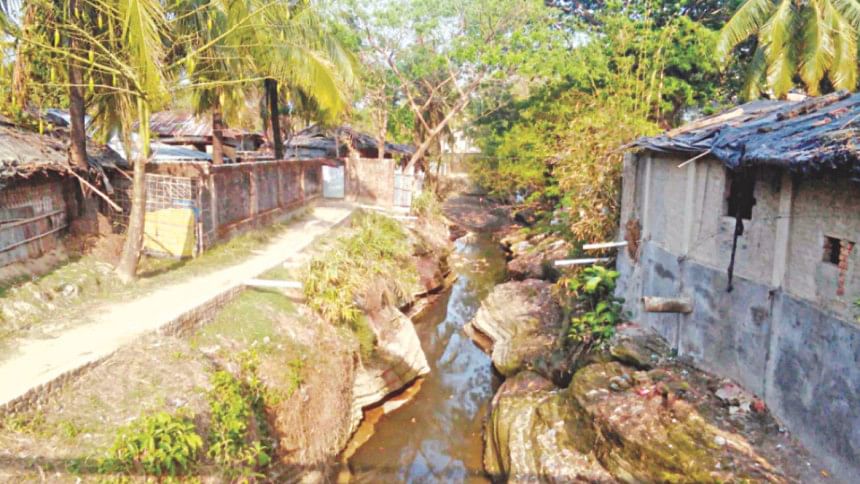Killing grounds, mass graves grabbed

The killing grounds, mass graves and other places bearing memories of the Liberation War are lying in utter neglect in different places of the district although 46 years have passed after the country's independence.
Many of the spots have already been grabbed and various establishments have been set up there as the authorities concerned did not take proper steps for their preservation.
Two years ago, the deputy commissioner (DC) formed a committee with the additional district magistrate as its convenor, following demand by Bangladesh Muktijoddha Sangsad's district unit and several cultural organisations, Cox's Bazar DC office sources said.
The committee was given the responsibility to identify the killing grounds, mass graves and places with the memory of the Liberation War.

They visited different areas of the district and talked with freedom fighters, witnesses, members of the affected families and local people.
They identified a place bearing the memory of the Liberation War on Airport Road in Cox's Bazar, five killing grounds and mass graves in the district town, ten killing grounds in Moheshkhali upazila, a killing ground and mass grave at bordering upazila Teknaf.
The biggest killing ground in Cox's Bazar town was on a six-acre land that now includes Sea Beach Rest House of the Public Works Department.
The Pakistani occupation forces and their collaborators Razakars picked up freedom-loving Bangalees from different areas of the district, made them stand in queues and killed them by brush firing there, said district Muktijoddha Sangsad Commander Mohammad Shahjahan.

Several hundred people were buried in the mass grave, he said.
The report prepared by the district administration's committee mentioned that a school, a madrasa, the old building of Shilpakala Academy, some shanties and a few government establishments have been set up in the area of the killing ground and mass grave.
Most other killing grounds and mass graves at Cox's Bazar town and Moheshkhali and Teknaf upazilas have also been grabbed.
Noted cultural activist Biswajit Paul Bishu, also former general secretary of Cox's Bazar district Shilpakala Academy, said the authorities concerned should take immediate steps to preserve the memories of the Liberation War.
It is essential to preserve the killing grounds, mass graves and other reminders of the Liberation War to instil its spirit in the mind of new generation, said Satyapriyo Chowdhury Dolon, president of Cox's Bazar chapter of Sammilito Sangskritik Jote.
Deputy Commissioner Md Ali Hossain said, "Lately the spots have been identified. Now work will be started to preserve the places as per the directive of the ministry concerned."


 For all latest news, follow The Daily Star's Google News channel.
For all latest news, follow The Daily Star's Google News channel. 



Comments